The emergence of Hexagenia limbata mayflies, throughout the Great Lakes and parts of the mid-Atlantic region, is nearly a religious event in angling circles. Each year in early June, these enormous mayflies blanket the landscape, emerging by the billions each night, smothering waterways, riverbanks, roadways and more with thousands of tons of trout-candy biomass. These biblical emergences—which commonly produce bridge and street closures, thanks to drifts and piles of spent mayflies so deep that snow plows are needed to clear and reopen these routes to traffic—can produce nocturnal trout feeding frenzies, keeping anglers glued to the water throughout the nighttime hours, lured by the prospect of epic catches and a chance at memories to last a lifetime.
These annual explosions of Hexagenia aren’t just food for trout, however. The swarms of Hex that emerge from midwestern rivers play a vital role in regional food webs by transferring trillions of calories and thousands of tons of nutrients from waterways to surrounding ecosystems. Mayfly emergences have been shown to be integral in the transfer of important nutrients like nitrogen and phosphorus and have been directly linked to the health of certain bird populations. In the Western Lake Erie basin alone, the annual Hexagenia emergence can produce up to 12 trillion calories of food—enough to satisfy the nutritional needs of over 50 million birds.
Not long ago, these historic and essential emergences were almost wiped out. By 1970, Hexagenia were gone from large swaths of the Midwest. Vast sections of the Mississippi, Illinois and Ohio rivers lacked the storied mayflies and the entire Western Lake Erie Hexagenia population was completely extirpated.
Following the introduction of the Clean Water Act in 1972 and two decades of targeted conservation and restoration efforts, Hexagenia populations began to rebound. Hex from populations that persisted recolonized formerly Hex-rich waterways. By the 1990s, the historic, suffocating emergences of Hexagenia had returned.
Unfortunately, according to a new study, Hex are once again suffering a precipitous decline. The study, recently published in the journal PNAS, analyzed radar observations of mayfly emergences to quantify long-term changes in annual biomass transport along the Upper Mississippi River and Western Lake Erie Basin. According to the study’s results, populations have declined dramatically from their recovered levels in the late 1990s and early 2000s.
The study’s findings indicate a staggering 84% decline in Lake Erie Hexagenia abundance between 2015 and 2019. Though not as severe, sharp declines are also evident in Mississippi River populations, where results indicate a decrease of 52% from 2012 to 2019. Overall, the results “suggest a widespread and multi-year decline in the populations of mayflies in the American Midwest.”
The study’s authors point to numerous potential culprits for the recent sharp declines in Hex abundance, including climate change, nutrient-laden runoff from agriculture, and pesticide use.
Discussing the impacts of climate change, the study notes, “As the climate continues to warm, lake stratification between June and September will become more common, leading to decreased benthic oxygen concentrations, chronic hypoxia, and emergence failures. Warmer surface waters fed by phosphorous-rich spring runoff into Lake Erie will continue to trigger summer algae blooms, releasing toxins, such as microcystin, into the environment. Hexagenia are highly sensitive to these toxins, and as algae blooms become more expansive and frequent in regions already susceptible to hypoxia, emergence failures are more likely to occur.”
The authors also highlighted both the baseline and amplifying affects of pesticide contamination of waterways, especially that of neonicotinoids, noting that "Neonicotinoid concentrations in Great Lake tributaries can be up to 40 times greater than the Chronic Concentration set by US Environmental Protection Agency Aquatic Life Benchmark." Hex nymphs are doubly exposed to these pesticides—exposure to which results in greater susceptibility to hypoxia, reduced fitness, and increased predation—as they are present both in dissolved water and in stream and riverbed sediments, where Hex and other Ephemeridae nymphs burrow.
“If these population trends continue,” the study warns, “persistent environmental changes could threaten to once more extirpate Hexagenia mayflies from North America’s largest waterways, making this ephemeral spectacle—and its vital ecological functions—a thing of the past.”




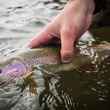

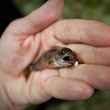




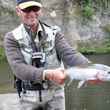





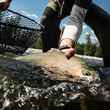








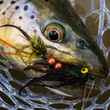
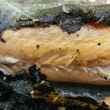


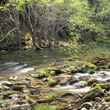
Comments
Steve replied on Permalink
Anybody can make up statistics. Point to where the actual data and research is located.
They cant even estimate a grizzly population I doubt they can even come close with insects.
Chad Shmukler replied on Permalink
The full study is linked directly above in the body of the article. For your convenience, you can also find it here: https://www.pnas.org/content/early/2020/01/15/1913598117
Ian Martin replied on Permalink
Actually, you can't make up statistics (averages, measures of variation, significance of change), but you can make up data. However luckily for us, both the data and the statistics in this well conducted study are available at PNAS, and the conclusions are supported by a wealth of other studies.
Nic replied on Permalink
I am glad someone is finally talking about this. Intensive agriculture have been spraying in the air pesticides that are designed to kill insects since the 30’s. What do you expect?
The European Union has started to ban some neonicotinoids. Luxembourg has banned Glyphosate completely. Forbidding these poisons is the way forward. Not only for the environment but for our own health. Intensive agriculture has to change for a sustainable agriculture. Everyone will benefit from this.
Thanks for highlighting this alarming issue.
N.
Pages